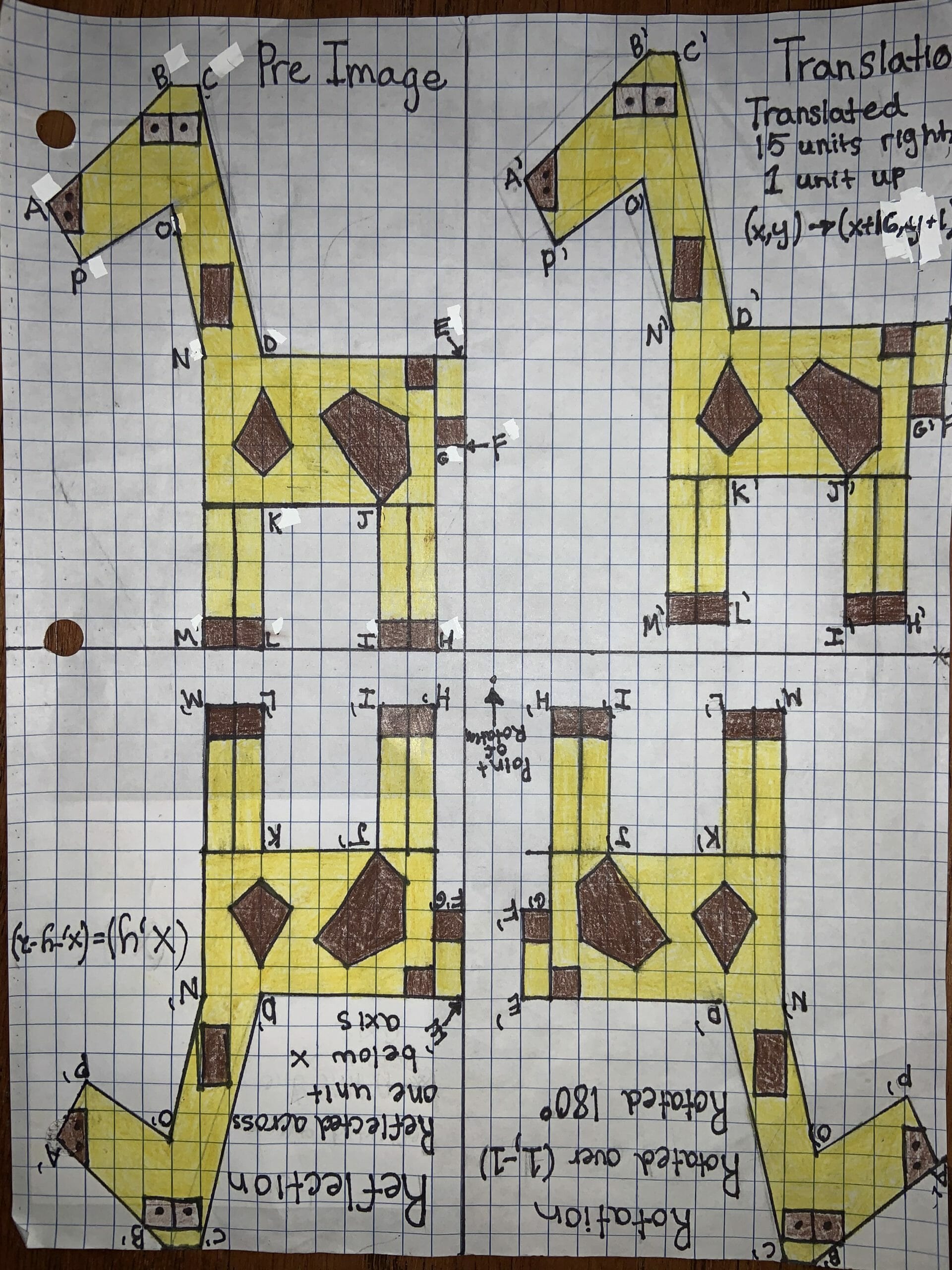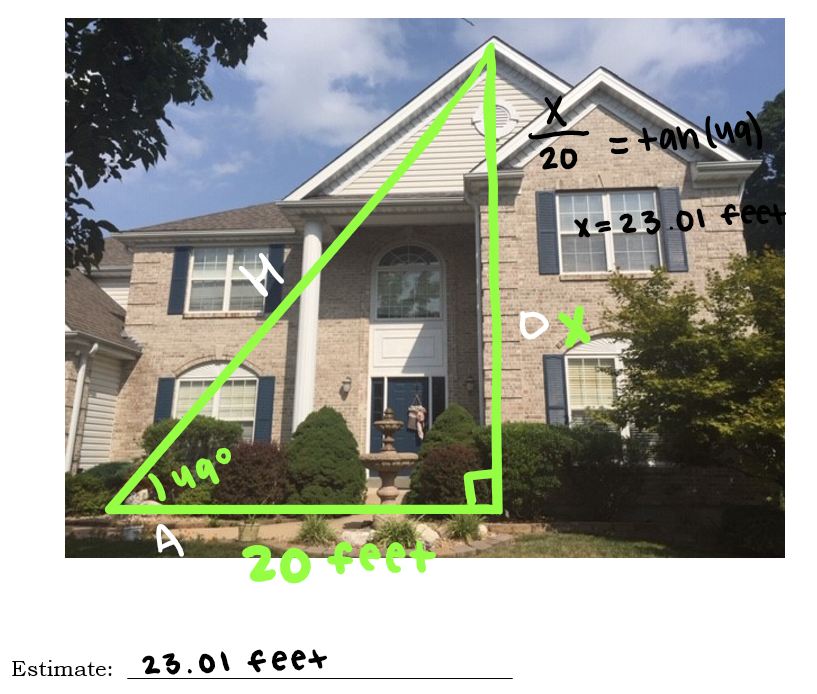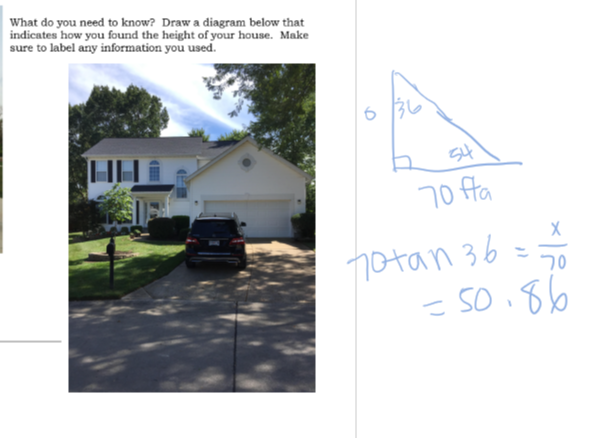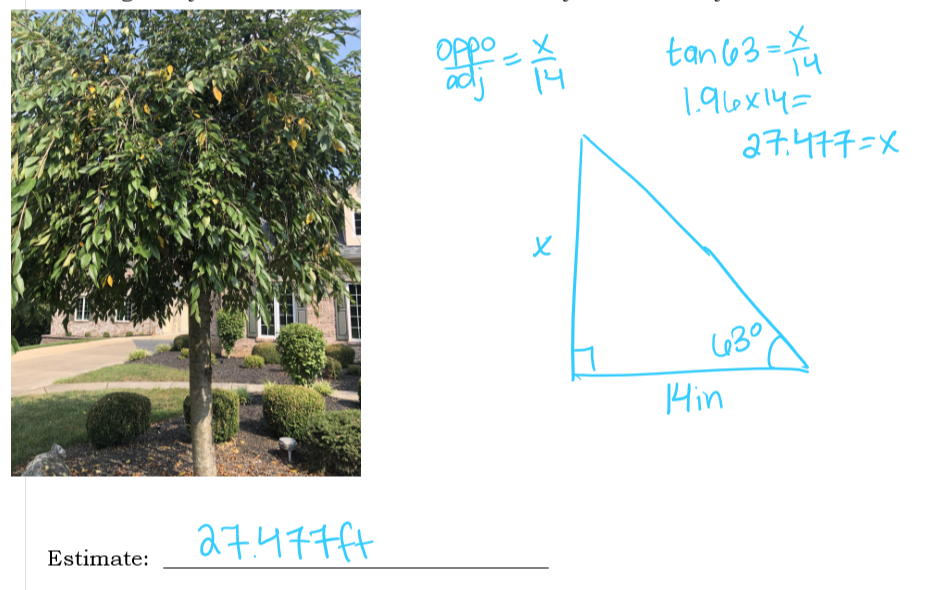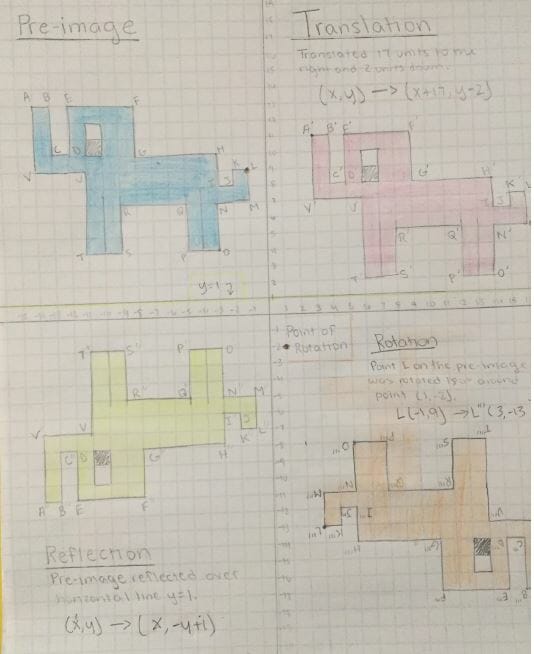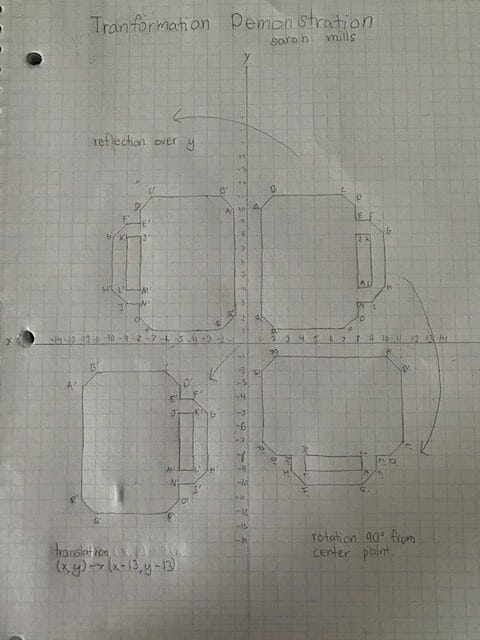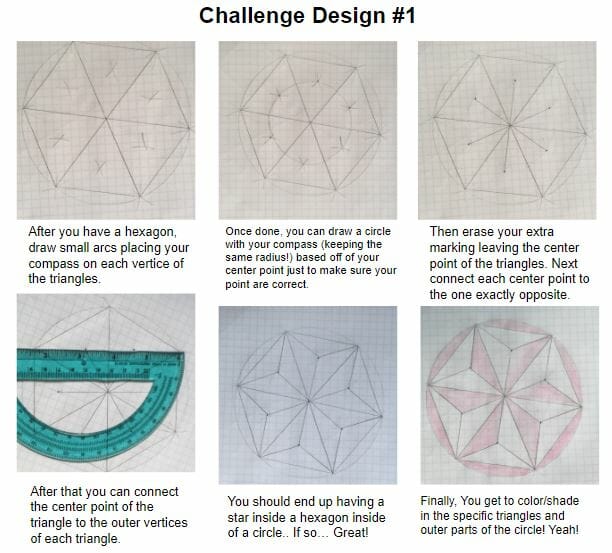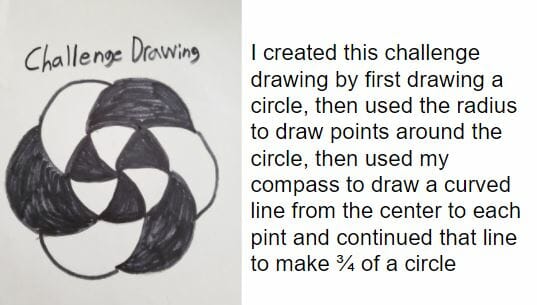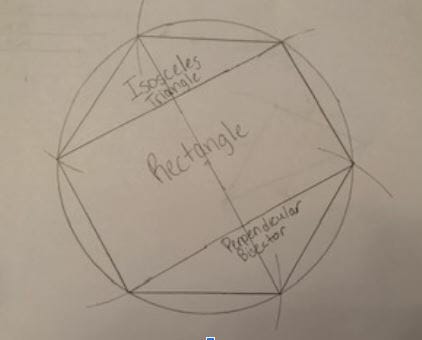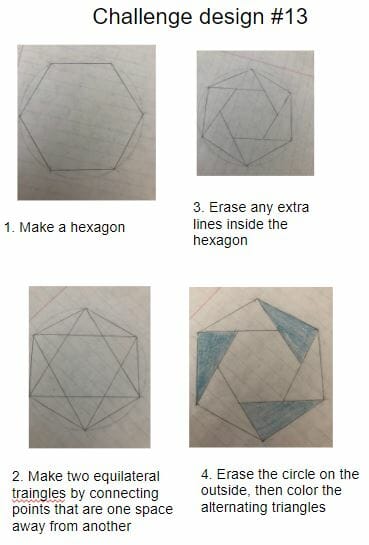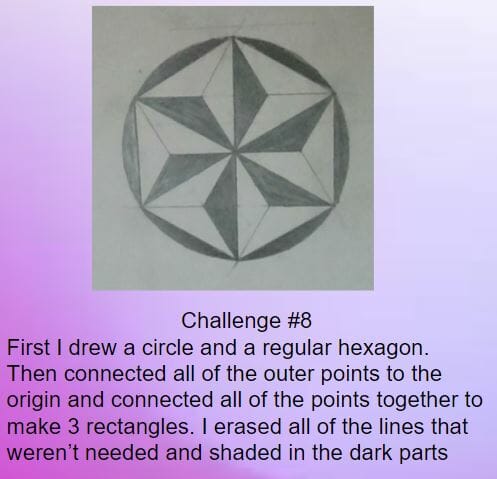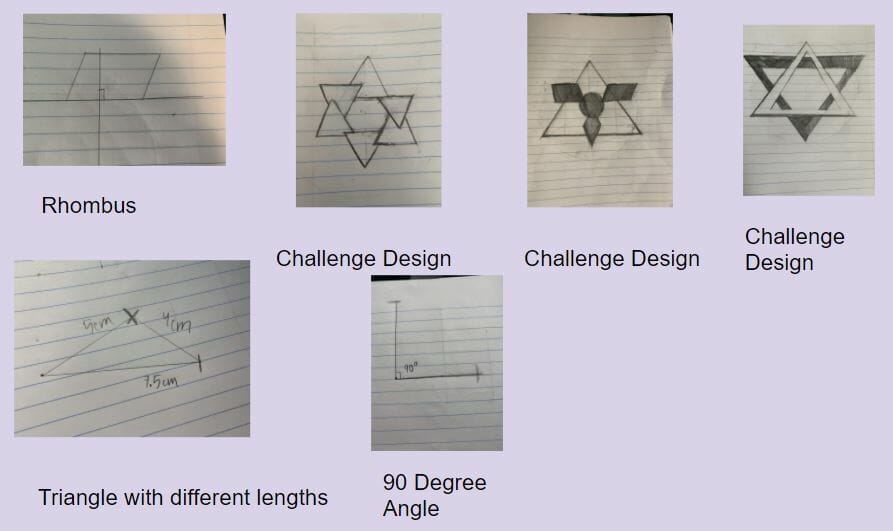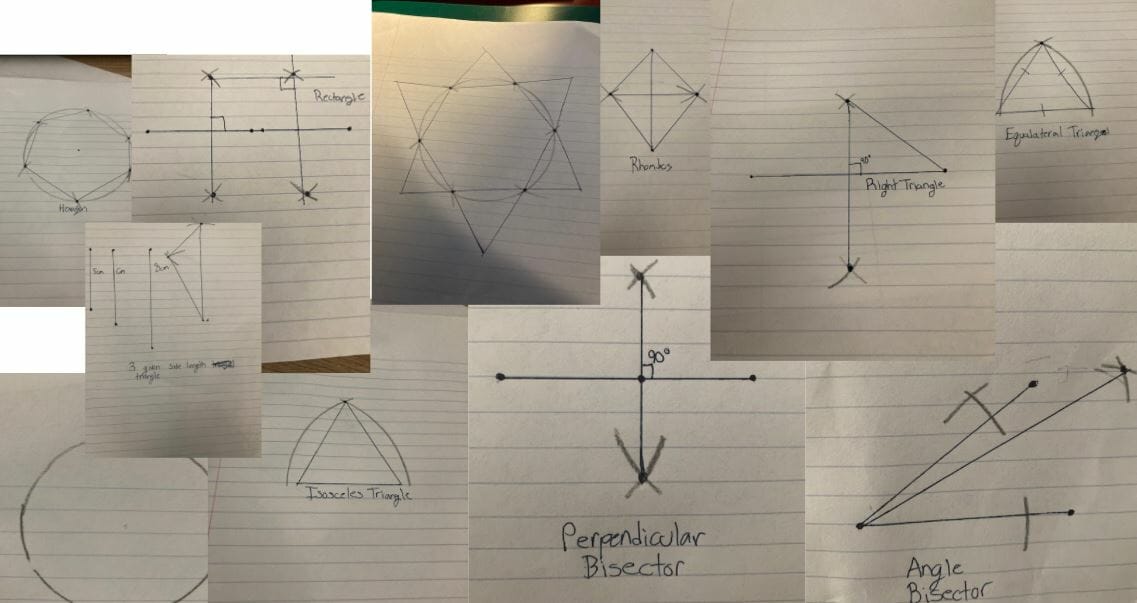Upper and Middle School math teachers designed fun and challenging activities to engage students in trigonometry, geometry, and math-inspired art.
Ninth graders used trigonomeTREE to estimate the height of their house, building, or a tree near their home using right angles and basic trigonometry equations. Upper School Math Teacher Janet Purdy shared, « This as a fun activity to get the students outside and practice their right-angle trigonometry skills to calculate the height of their home. » Students used their smartphone compass, a tape measure or yardstick, and a calculator. They also had the option to approximate the distance by walking heel-to-toe steps, and the app « Rotating Sphere Clinometer » helped them to measure angles. With these tools in hand and with the trigonometry knowledge they’ve gained in the course, students were able to calculate the height of their home.
Meanwhile, 8th grade mathematicians have been making art with their geometry knowledge in these opening weeks of school. The project called students to demonstrate their mastery of shape transformation constructions, concepts, and algebraic identifications. They started by separating a paper into quadrants and then drew a multi-point complex pre-image in one of the quadrants. The points in the shape were labeled alphabetically. Middle School Math Teacher Krystal White shared, « I encouraged students to challenge themselves by creating detailed pre-images, not just a simple shape or letter. The next step was to transform the pre-image by translation, reflection, and rotation in each of the other quadrants. Students also labeled the transformation type, described the transformation in words, and wrote the transformation in coordinate notation. Some used color to add to the artistic quality. I am impressed by the results – both mathematically and artistically! »
Eighth graders were also busy creating math construction portfolios, filled with geometric-inspired art. Students used only a compass and a straight edge to create all kinds of geometric and mathematic shapes from simple triangles to challenging star shapes. Students periodically added to a Google Slide portfolio to showcase their constructions and demonstrate their progression of work and understanding of the concepts. White said, « The portfolio approach allowed students to demonstrate where they began with this content, skill set, and what they learned over time. When finished, they could see the progression and be proud of their new mastery of this learning standard. »
Claire Giokas ’25 said, « In this unit, I got to try out many different ways to make each shape…The one shape I really believe was a good base for the other shapes was a hexagon. I found many different ways to make shapes inside of the hexagon. Whenever I needed to think of how to draw a new shape, I would always draw a hexagon first so I could look for creative ways inside the hexagon. »
Way to go mathematicians! It is wonderful to see MICDS students’ trigonometry and geometry studies and artistic talent translating to the virtual world, full STEAM ahead.
